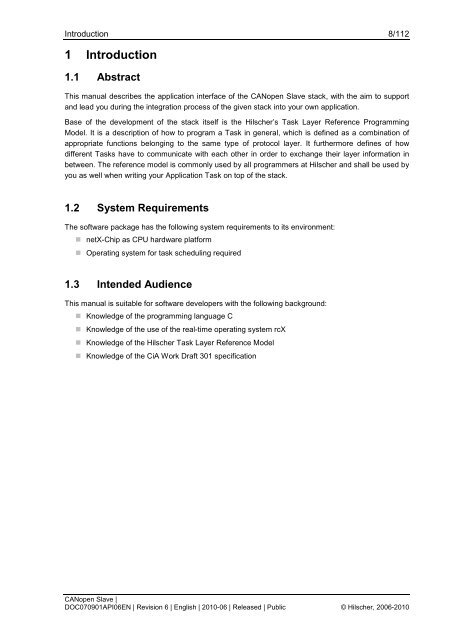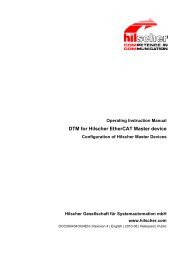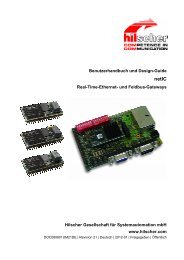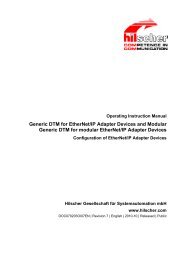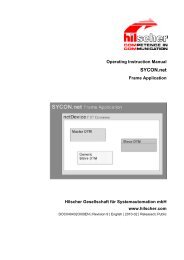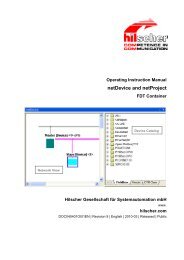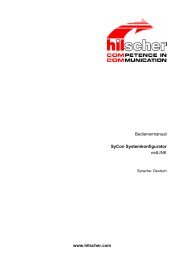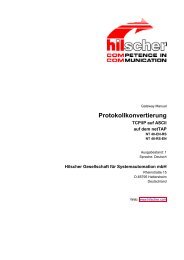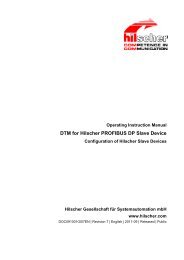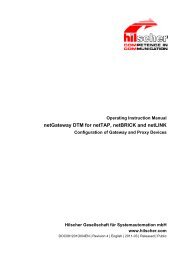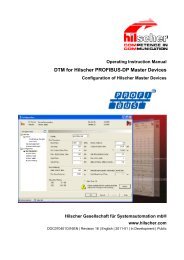CANopen Slave
CANopen Slave
CANopen Slave
Create successful ePaper yourself
Turn your PDF publications into a flip-book with our unique Google optimized e-Paper software.
Introduction 8/112<br />
1 Introduction<br />
1.1 Abstract<br />
This manual describes the application interface of the <strong>CANopen</strong> <strong>Slave</strong> stack, with the aim to support<br />
and lead you during the integration process of the given stack into your own application.<br />
Base of the development of the stack itself is the Hilscher’s Task Layer Reference Programming<br />
Model. It is a description of how to program a Task in general, which is defined as a combination of<br />
appropriate functions belonging to the same type of protocol layer. It furthermore defines of how<br />
different Tasks have to communicate with each other in order to exchange their layer information in<br />
between. The reference model is commonly used by all programmers at Hilscher and shall be used by<br />
you as well when writing your Application Task on top of the stack.<br />
1.2 System Requirements<br />
The software package has the following system requirements to its environment:<br />
• netX-Chip as CPU hardware platform<br />
• Operating system for task scheduling required<br />
1.3 Intended Audience<br />
This manual is suitable for software developers with the following background:<br />
• Knowledge of the programming language C<br />
• Knowledge of the use of the real-time operating system rcX<br />
• Knowledge of the Hilscher Task Layer Reference Model<br />
• Knowledge of the CiA Work Draft 301 specification<br />
<strong>CANopen</strong> <strong>Slave</strong> |<br />
DOC070901API06EN | Revision 6 | English | 2010-06 | Released | Public © Hilscher, 2006-2010


